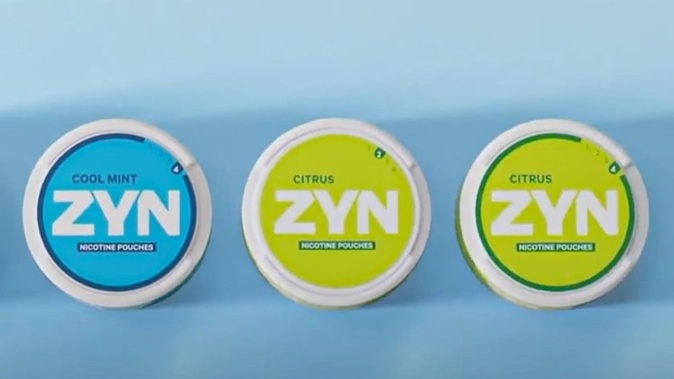
Health professionals are sounding the alarm over a new nicotine product that is infiltrating New Zealand schools.
ZYN, a tobacco-free nicotine pouch brand, has grown into the mainstream through social media influencers on sites such as TikTok and Instagram.
The Swedish-based product is designed to be an alternative to smoking or vaping and as a way for users to wean themselves off nicotine.
 The Swedish-based product is designed to be an alternative to smoking or vaping and as a way for users to wean themselves off nicotine. Photo / Supplied
The Swedish-based product is designed to be an alternative to smoking or vaping and as a way for users to wean themselves off nicotine. Photo / Supplied
University of Otago Professor Richard Edwards, who’s also co-director of Aspire2025, told the Herald there are concerns about the widespread uptake of these products among young people.
“Although these products might not be as harmful as smoking, they might be as addictive or similarly addictive, and so you could end up with widespread use amongst young people and widespread addiction to nicotine,” he said.
The brand differs from other nicotine pouch brands like Snus as it doesn’t contain tobacco.
 The pouches look like small tea bags and are placed between the lip and gum. Photo supplied
The pouches look like small tea bags and are placed between the lip and gum. Photo supplied
The pouches look like small tea bags and are placed between the lip and gum.
They’re typically sold in small, colourful tins of about 15 to 20 pouches and come in a range of flavours including berry, coffee, and citrus.
In New Zealand, the sale of nicotine pouches was banned by the Labour Government in 2020, but importing from overseas remains legal as long as they are not sold.
Despite the ban, the Herald understands the products are now making their way into schools across Aotearoa, with claims students are selling them to school peers.
However, Ministry of Education operations and integration leader Sean Teddy said it’s not an issue that schools have raised with the ministry.
“Under the Smokefree Environments and Regulated Products (Vaping) Amendment Act 2020, all schools, kura kaupapa, early childhood education centres, and kōhanga reo it is unlawful to smoke or vape on school premises.”
Associate Health Minister Casey Costello earlier signalled she wanted to introduce oral nicotine products, including snus and chewing tobacco to provide smokers with a greater range of safer alternatives to smoking.
Associate Health Minister Casey Costello earlier signalled she wanted to introduce oral nicotine products, including snus and chewing tobacco Photo / Mark Mitchell
“Early information I have got around oral nicotine is that it was used highly successfully in Scandinavian countries,” she earlier told the Herald.
“I think Sweden was one of the first countries in Europe to reach below that 5 per cent threshold. And how much oral nicotine products contributed to that - I’m really interested to understand how that worked.”
However, Edwards said introducing oral nicotine products might not work the way they’re intended to.
“These products have not been shown to be effective at helping smokers to quit.
“Compared to vaping where trials have been done that show that they can help smokers to quit, as far as I’m aware, for the new oral nicotine products, there are no such trials.”
Edwards fears it’ll be difficult to target the oral nicotine products to those who will benefit from them the most.
“The highest use of vaping products is amongst young people… where we want it to be is amongst 50-year-old smokers,” he said.
“The fear is that the same thing would happen with these products.
“If we open the floodgates to these products, which might be for very good reasons, it might end up largely helping addict more young people to nicotine.”
Edwards said these products should not be introduced unless there’s a really strong rationale for doing it.
“We could do like a pharmacy-only distribution model, so you have a much more restricted distribution but if they’re available for general sale in dairies and petrol stations… what we’ll end up with is another product which is widely used amongst young people.”
This article was originally published on the NZ Herald here.
Take your Radio, Podcasts and Music with you









